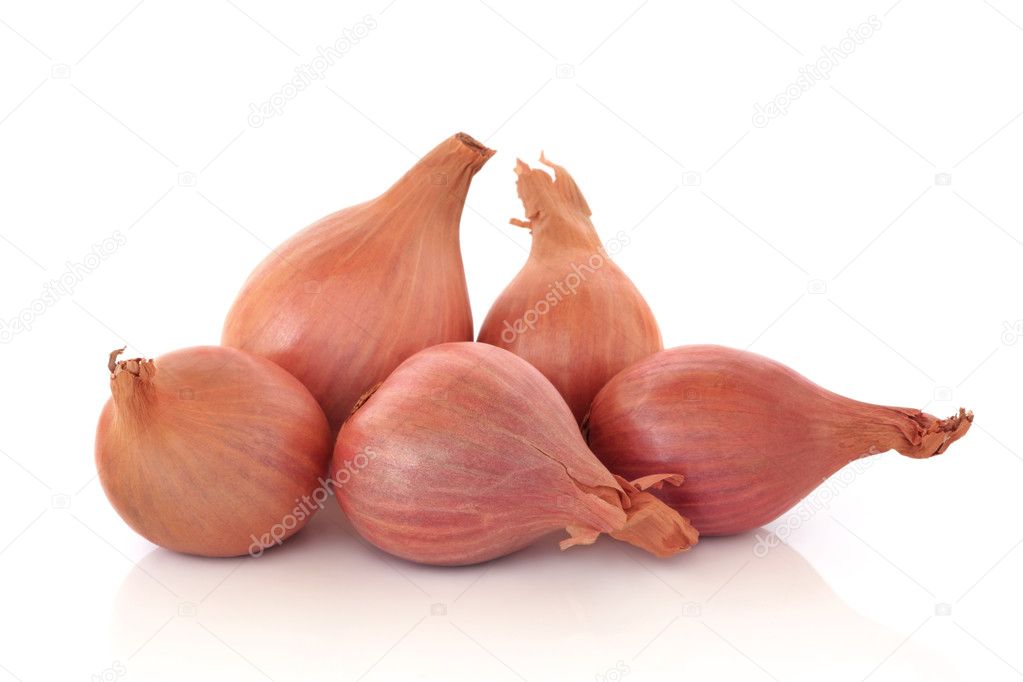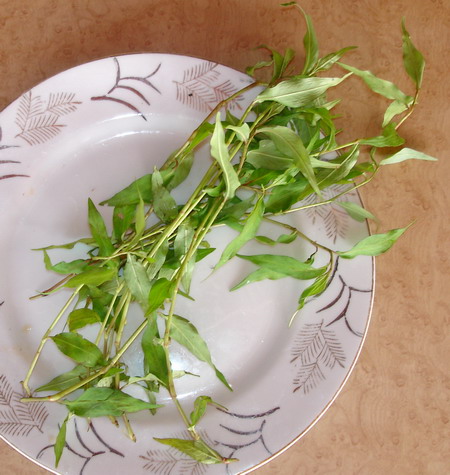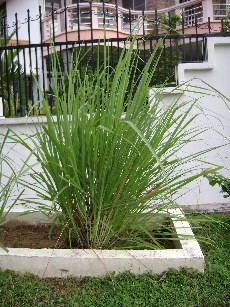Penang Nyonya Asam Laksa
Penang Asam Laksa is ranked No 7 in the world's 50 most delicious foods
 |
| My special Gurney Drive style NyonyaAsam laksa |
Step 1 blended ingredients A : blend together:
2 thumb-sized galanggal (lengkuas)--hmm...new metric system :) ?
20 shallots
2 big stalk lemongrass cut up into small pieces
3 thumb sized fresh tumeric- cut up
Blended ingredient B : blend together
Chilli paste from 30 dried chillies / 1/2 chilli boh
0ne inch roasted belacan / 1 tablespoon belacan powder (or you can also use 1 tablespoon of otak udangif you prefer)
Ingredient C:
1 cup thick tamarind paste (made from 1/4 cup tamarind)
3 slices asam gelugor
a handful daun kesum,
a handful daun pudina/mint
1 small can of canned sardine in tomato sauce ( mashed the meat and use the sauce as well)
2 bunga kantan ( ginger bud) -halved
Blended ingredient B : blend together
Chilli paste from 30 dried chillies / 1/2 chilli boh
0ne inch roasted belacan / 1 tablespoon belacan powder (or you can also use 1 tablespoon of otak udangif you prefer)
Ingredient C:
1 cup thick tamarind paste (made from 1/4 cup tamarind)
3 slices asam gelugor
a handful daun kesum,
a handful daun pudina/mint
1 small can of canned sardine in tomato sauce ( mashed the meat and use the sauce as well)
2 bunga kantan ( ginger bud) -halved
 |
| .3 more for toppings would've been better |
Step 2 : In a big pot boil :
7-10 pc Kembong/mackerel/ sardine - one type or any mixture
(or if you are in a foreign country you may use canned tuna/mackerel/sardines)
(or if you are in a foreign country you may use canned tuna/mackerel/sardines)
4-5 sprigs of daun kesum (Vietnamese mint)
1 stalks lemongrass-bruised
2 litres of water
Remove the fish and separate the flesh from the bones. Flake 3/4 of the flesh and reserve some big pieces for garnishing. Put all the fish head and bones in a blender with some water and strain out all the bones. Do this until all the goodnesss of the bones have been strained out. Put the fish flakes and the bone stock back into the fish stock (which is strained and all herbs removed). Add in the above blended ingredients A, B and C above .
Step 3 : Add:
2 tablespoon sugar
1/2 cup of chopped up pineapple for an added kick
salt to taste.
Step 4 : Simmer and reduce to a thick broth.
The rice noodles and condiments
Step 5 Prepare the Condiments :
1 cucumber - sliced and julienne
1 big onion - thinly sliced
1 small pineapple - julienne
Romain lettuce
hard- boiled eggs - halved
Bunga Kantan (ginger bud) - minced
Daun Pudina / Mint sprigs
fresh red Chillies
Cili padi
NOTE : The Broth is best made a day ahead of time as it gets better with time (to give time for all the spices and herbs to infuse together)
1 stalks lemongrass-bruised
2 litres of water
Remove the fish and separate the flesh from the bones. Flake 3/4 of the flesh and reserve some big pieces for garnishing. Put all the fish head and bones in a blender with some water and strain out all the bones. Do this until all the goodnesss of the bones have been strained out. Put the fish flakes and the bone stock back into the fish stock (which is strained and all herbs removed). Add in the above blended ingredients A, B and C above .
Step 3 : Add:
2 tablespoon sugar
1/2 cup of chopped up pineapple for an added kick
salt to taste.
Step 4 : Simmer and reduce to a thick broth.
The rice noodles and condiments
 |
| I used the ready thick Laksa noodles from Tesco. If you are using the dried ones just soak in water for 15 minutes and boil until soft. For the condiments, |
1 cucumber - sliced and julienne
1 big onion - thinly sliced
1 small pineapple - julienne
Romain lettuce
hard- boiled eggs - halved
Bunga Kantan (ginger bud) - minced
Daun Pudina / Mint sprigs
fresh red Chillies
Cili padi
NOTE : The Broth is best made a day ahead of time as it gets better with time (to give time for all the spices and herbs to infuse together)
Step 6 Assemble , serve and enjoy...
In a bowl put in some noodles , topped with the condiments and pour the Laksa soup over ..enjoy...yummmmm....
Glossary of spices used
 |
| serai/lemongrass |
| lengkuas/galanggal |
 |
| bawang merah/shallots |
 |
| belacan |
 |
| kunyit hidup/tumeric |
 |
| bunga kantan (ginger budAdd caption |
 |
| daun pudina/mint |
 |
| Asam jawa/tamarind |
 |
| daun kesum /Vietnamese mint |
How to plant daun kesum and lemongrass (copied with thanks to http://www.pickles-and-spices.com/index.html)
Grow Your Own Daun Kesum (Vietnamese Mint)
To grow your own daun kesum is a great way to start a herb garden. Daun kesum is an essential ingredient for making laksa. Without daun kesum, there is no way your laksa can be complete. At some places in Malaysia, daun kesum is refered to as "daun laksa" or laksa leaves. The English name for it is most probably Vietnamese mint but I am not really sure because the real Vietnamese mint is maybe slightly different but still belongs to the same family. Daun kesum is a member of the mint family. It is a veryThe leaves are elongated, with soft stalk, each segment of the stalk has the potential to grow into another bunch of mint leaves because roots sprout from the stalk itself.

Daun Kesum
You can grow your own daun kesum from any laksa stalks you sometimes get as garnish when you bought laksa from a hakwer's stall.
Living in an apartment on the fourth floor, I do not have enough space for having a garden, but I can grow daun kesum easily from a plastic container (like used ice-cream tub) filled with some damp earth.
The leaves are green and will turn yellow and then brown when they start withering. The stalks will grow and grow if you let them but usually I trim the tips to let them branch out.
Other than laksa, the leaves can be used as an additional herb when you make nasi ulam, nasi kerabu and when you make asam pedas or other fish dishes. It can be sliced thinly as garnishing, eaten raw or added in sour spicy soup like laksa.
The smell of this minty herb is strong and unmistakable. Therefore, it is good to be used in a fish dish with gravy to counterbalance the fishy smell.
To start planting the herb is very simple indeed.
Get a few stalks of fresh daun kesum from the wet market or if your friend has a herb garden, ask for some stalks from her.
Place the stalks in a jam jar or glass filled with 1 cm of water. Let them sit for a few days until a substantial length of roots can be seen growing at the bottom of the jar.
Transfer your stalks into a container filled with damp earth. Cover about 2.5cm of the stalks in the dirt. Make sure the bottom of the container has some small holes to let excess water to flow out. See, it is easy to grow your own daun kesum.

Lemongrass Shrub, the Malay word for lemongrass is "serai"
The herb needs very little maintenance except for enough water to ensure the earth it is planted in is always damp. Oh yes, also plenty of sunlight. You can place the herb pot at the window sill or if you have a balcony, place it there. It grows well in your backyard too.
Fertilizer made of compost is good for the leaves. Old wives have this tip to nourish your herbs: use the bloody water that remained after washing and gutting your fish to spray on the leaves and earth, it is supposed to be full of nutrients for plant. Do this treatment every two weeks or so.
Daun kesum grows very fast. Given good care and enough water, within a week you can already have a bunch filling up your ice-cream tub already.
The method to grow your own daun kesum also applies to lemongrass. However, lemongrass needs more space because the leaves of lemongrass almost resembles a bunch of tall weed (lalang). Lemongrass needs a large terracotta pot or a large plastic water tank filled with earth, preferably a little sandy mixture with the dirt.

No comments:
Post a Comment